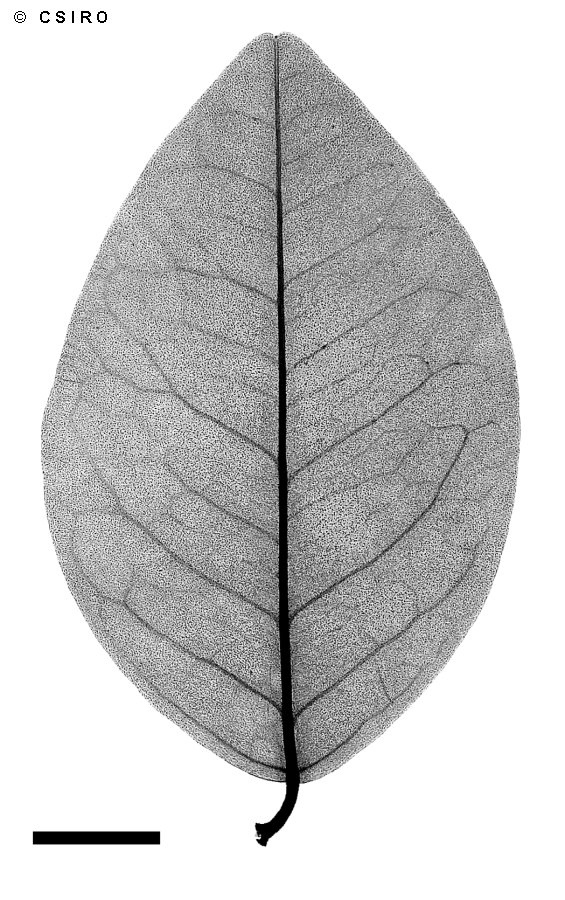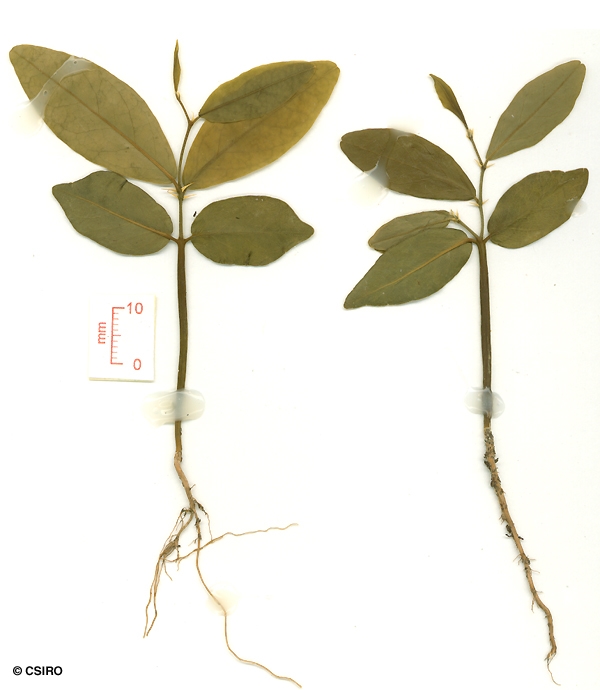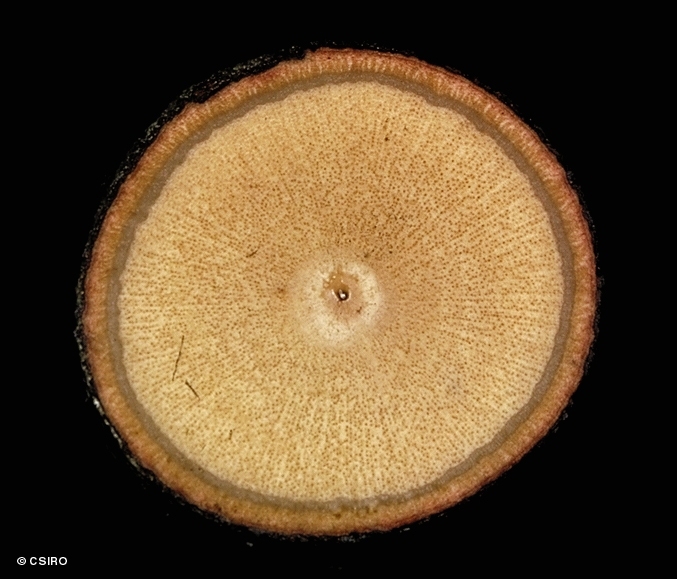Australian Tropical Rainforest Plants - Online edition
Capparis sepiaria L.







Linnaeus, C. von (1759) Systema Naturae : 1071. Type: (none cited). [given by M.Jacobs, Blumea 12 (1965) 489-493 as Anonymous s.n. (LINN, cat. 664.4), Ind. hab. ad sepes, fl.].
Wild Orange; Bumble
Usually grows as a vine but can flower and fruit when still at the shrub stage. Vine stem diameters to 5 cm recorded. Blaze odour strong and unpleasant.
Stipules are paired recurved thorns about 0.5-8 mm long, broad based, present 2-3 mm below the petiole-twig junction. Leaf blades rather variable, about 1.5-10 x 1-4 cm, usually +/- ovate but in the Kimberley Region in particular and perhaps in other areas e.g. Chillagoe, the leaves, particularly on shrubs, are often linear. Petioles pubescent or sparsely pubescent, about 5-6 mm long. Lateral veins curving inside the blade margin but not forming definite loops. Underside of young leaves clothed in golden hairs. Young shoots clothed in ferruginous hairs.
Flowers arranged in umbellate clusters, terminating twigs or short shoots. Sepals dimorphic, 2+ 2, about 3-6 mm long, free from one another even in the bud stage. Petals about 4.5-7.5 mm long, clothed in pale hairs on both the inner and outer surfaces. Stamens about 30-45. Gynophore about 4-15 mm long, mainly glabrous, ovary at the apex.
Fruit black when ripe, subglobular, about 10-15 mm diam., pericarp smooth. Seeds 1 or 2, each about 5 mm long. Embryo green. Cotyledons folded and rolled and located +/- in the centre of the embryo spiral.
Cotyledons lanceolate or ovate, about 20-29 x 10-15 mm, apex acute or obtuse. First pair of leaves alternate, armed with stipular spines. At the tenth leaf stage: leaves variable, elliptic up to 50 x 20 mm or linear and up to 65 x 10 mm, stipular spines usually present, about 3-4 mm long, recurved. Terminal buds clothed in pale brown prostrate hairs. Seed germination time 2 to 19 days.
Occurs in WA, NT, CYP, NEQ and CEQ. Altitudinal range from near sea level to 350 m. Grows in open forest, beach forest, vine thickets and monsoon forest. Also occurs in Africa, Asia and Malesia.
This species may have medicinal properties.





